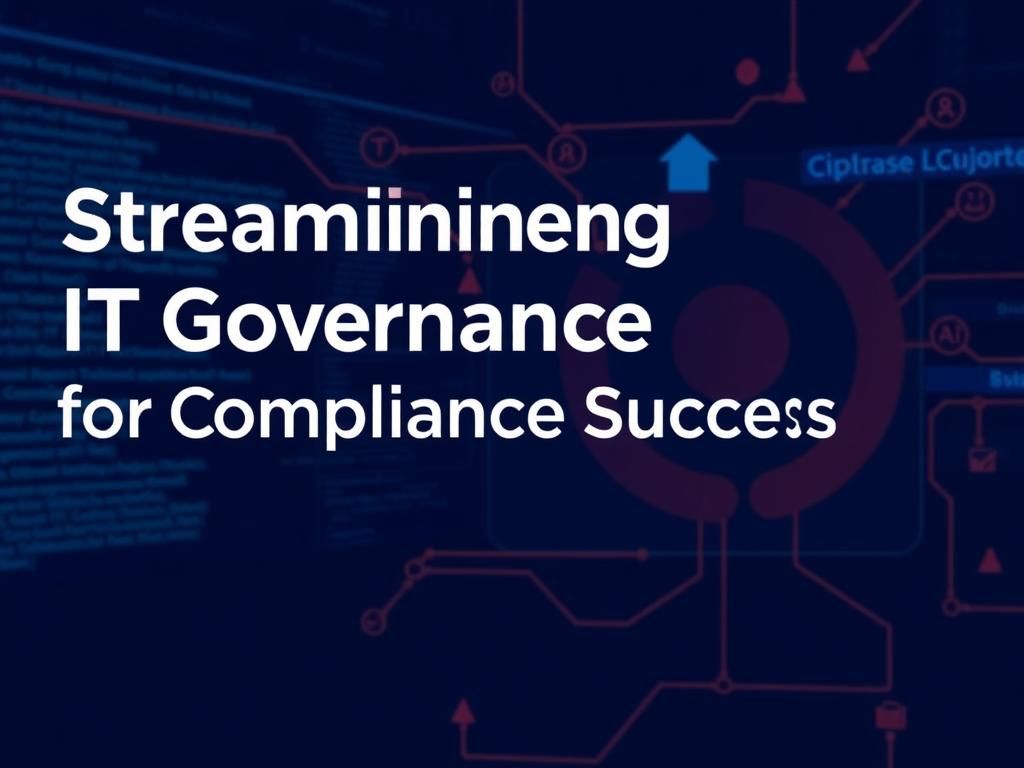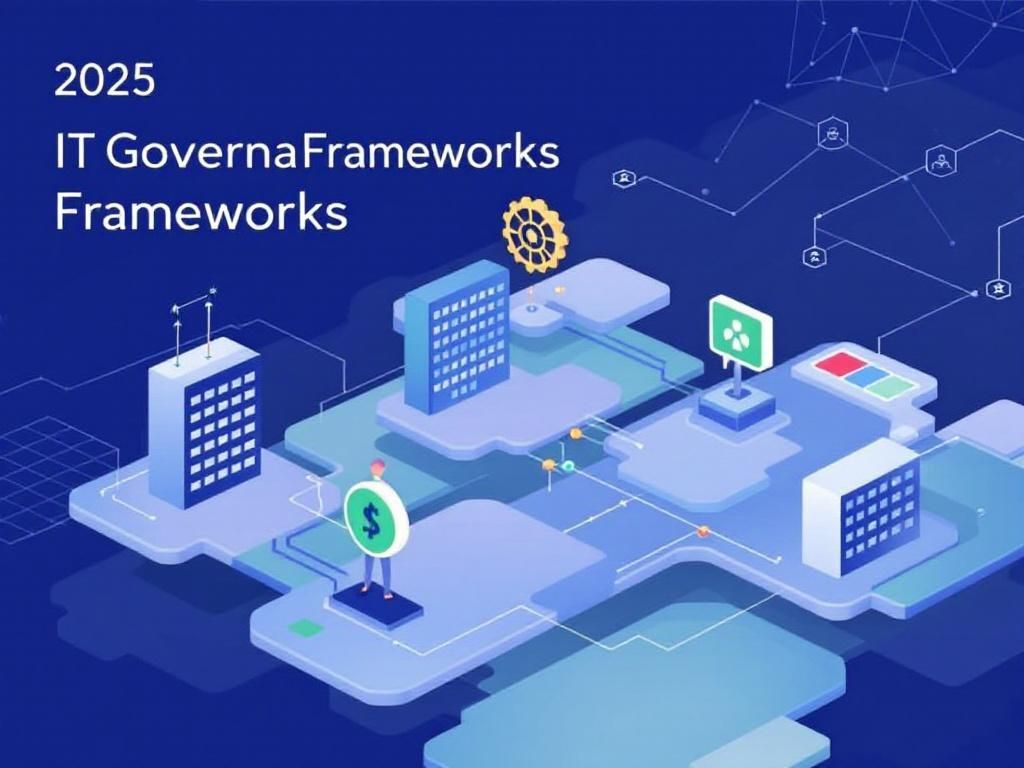Mastering IT Governance in Regulated Industries
Explore key strategies and best practices for effective IT governance in regulated industries to ensure compliance and enhance operational efficiency.

In today’s fast-paced digital landscape, the intersection of technology and regulation presents both opportunities and challenges for organizations, especially in regulated industries such as finance, healthcare, and energy. As tech innovations rapidly evolve, so do compliance requirements, making IT governance an essential pillar for operational success and risk management. This article delves into the intricate world of IT governance, emphasizing its importance, frameworks, and best practices tailored for regulated sectors.
Table of Contents
The Importance of IT Governance
IT governance serves as a cornerstone for aligning IT strategy with business goals while ensuring compliance with external regulations and internal policies. Its importance can be distilled into several key points:
- Risk Management: Identifies and mitigates potential risks associated with IT assets.
- Strategic Alignment: Ensures that IT initiatives support business objectives.
- Compliance: Adheres to laws and regulations specific to the industry.
- Performance Measurement: Evaluates the effectiveness and efficiency of IT investments.
- Resource Optimization: Maximizes value from IT resources and capabilities.
Frameworks for IT Governance
Choosing the right framework for IT governance is critical for organizations in regulated industries. Below are some of the most widely recognized frameworks:
COBIT (Control Objectives for Information and Related Technologies)
COBIT is a comprehensive framework that helps organizations manage and govern their IT environment. It focuses on:
- Aligning IT with business goals.
- Optimizing risk management.
- Enhancing resource management.
ITIL (Information Technology Infrastructure Library)
This framework emphasizes service management and provides best practices for delivering IT services. Key components include:
- Service Strategy
- Service Design
- Service Transition
- Service Operation
- Continual Service Improvement
ISO/IEC 38500
This international standard provides a framework for the corporate governance of IT, aimed at helping boards understand and fulfill their legal, regulatory, and ethical obligations in relation to IT.
Implementing IT Governance
Successful implementation of IT governance requires careful planning and execution. Here are some key steps organizations should follow:
1. Define Governance Objectives
Establish clear objectives aligned with the overall business strategy. Consider regulatory requirements specific to the industry.
2. Identify Stakeholders
Engage key stakeholders including:
- Executive leadership
- IT staff
- Compliance officers
- End-users
3. Develop Policies and Procedures
Create comprehensive IT governance policies that address:
- Data privacy and security
- Incident response
- Change management
4. Implement Technology Solutions
Leverage software solutions such as GRC (Governance, Risk Management, and Compliance) tools to automate and streamline governance processes.
5. Monitor and Measure
Establish KPIs (Key Performance Indicators) to measure the effectiveness of IT governance initiatives over time.
| KPI | Description | Target |
|---|---|---|
| Incident Response Time | Time taken to respond to IT incidents | Less than 1 hour |
| Compliance Audit Score | Score from compliance audits | Greater than 90% |
| IT Project ROI | Return on investment for IT projects | Greater than 15% |
Challenges in IT Governance
Organizations in regulated industries face several unique challenges in implementing IT governance:
1. Regulatory Complexity
Keeping up with ever-changing regulations can be daunting, requiring constant updates to governance frameworks and policies.
2. Resource Constraints
Many organizations grapple with limited budgets and staffing, making it challenging to implement comprehensive governance measures.
3. Technology Evolution
The rapid pace of technology change can outstrip governance efforts, necessitating agile governance frameworks that can adapt.
Best Practices for Effective IT Governance
To navigate the complexities of IT governance in regulated industries, organizations should consider the following best practices:
1. Foster a Governance Culture
Encourage a culture of compliance and governance at all levels of the organization through training and awareness programs.
2. Engage Leadership
Ensure executive leadership is directly involved in governance initiatives to drive accountability and support.
3. Continuous Improvement
Regularly review and update governance practices based on feedback, audits, and industry trends.
4. Collaborate Across Departments
Promote collaboration between IT, compliance, and business units to create a unified approach to governance.
Conclusion
IT governance in regulated industries is an ongoing journey that requires commitment and diligence. By implementing robust governance frameworks, addressing challenges proactively, and adopting best practices, organizations can navigate the complexities of technology and regulation effectively. A strong IT governance strategy not only ensures compliance but also drives strategic alignment, operational efficiency, and long-term success in an ever-evolving digital landscape.
FAQ
What is IT governance and why is it important for regulated industries?
IT governance refers to the framework that ensures that IT investments support business goals and comply with regulations. In regulated industries, it is crucial for maintaining compliance, managing risks, and ensuring the integrity of data.
What are the key components of IT governance in regulated sectors?
Key components include risk management, compliance with legal requirements, data security protocols, and alignment of IT strategy with business objectives.
How can organizations ensure compliance with IT governance frameworks?
Organizations can ensure compliance by implementing regular audits, adopting industry best practices, training staff on compliance protocols, and utilizing technology solutions for monitoring and reporting.
What role does risk management play in IT governance?
Risk management is foundational to IT governance, as it helps identify, assess, and mitigate risks associated with IT systems and processes, particularly in industries with strict regulatory requirements.
How can technology assist in IT governance for regulated industries?
Technology can automate compliance monitoring, provide data analytics for risk assessment, and streamline reporting processes, thus enhancing overall governance and reducing manual workloads.
What are the challenges organizations face in IT governance for regulated industries?
Challenges include keeping up with changing regulations, integrating governance frameworks with existing systems, ensuring staff compliance, and managing the costs associated with comprehensive governance strategies.








